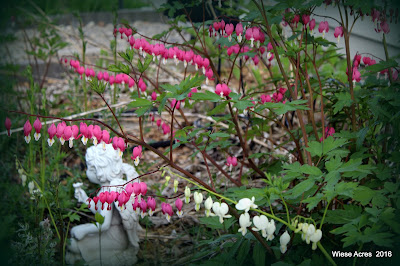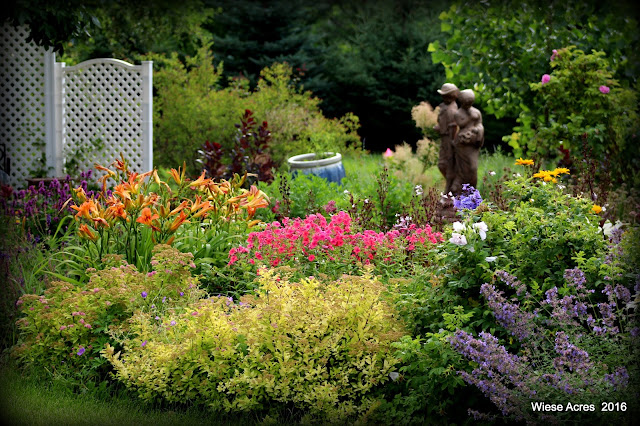 |
| Prepared horseradish (internet photo) |
Horseradish is a delicacy. Now, I know some folks don't agree with that, but according to the Horseradish Information Council (yes, it really does exist), there are about six million gallons of prepared horseradish consumed each year. That means a lot of people must like it. Horseradish even has its own international festival, celebrated each May in Collinsville, Illinois, where nearly 60% of that six million gallons of horseradish is grown.
Horseradish was introduced to this country by our German ancestors, which is probably why I can't ever remember a time when ground, creamed horseradish wasn't served with any pork dish, and especially ham. It was only when I was a little older that I was introduced to how wonderful it tastes with roast beef or prime rib.
Horseradish is a low fat condiment that is loaded with flavor for just about any type of meat. It may also kill harmful bacteria that found its way into the food. That same antibacterial action, coupled with natural diuretic properties, can help treat urinary tract infections. Some people believe it helps muscle and joint aches and pains. It is also guaranteed to clear your sinuses and unstuff your nose if you get too strong a whiff or take a big, savory bite.
 |
| Common horseradish (internet photo) |
Horseradish is in the Brassicaceae family, a relative of cabbage, mustard, and broccoli. It is a perennial, hardy in zones 2 to 9. It grows best in the colder zones, as it needs a definite winter chilling period to produce dormancy and retain its best flavor and texture. There are two varieties of horseradish: common, which has large, crinkled leaves; and Bohemian, which has smooth, narrow leaves.
Horseradish grows in most soil types, but it must have good drainage. If the root sets in water logged conditions, it will rot. Horseradish is a heavy potash feeder, so it may benefit from some extra compost or other source of water soluble potassium. The plant prefers to grow in full sun, but will produce just fine with part shade.
Think carefully about where you wish to plant horseradish because you will likely have it there - and in the surrounding areas - forever. Horseradish spreads by its roots, and even a tiny piece left in the soil will produce new plants. Never till an area where there might be horseradish roots - you likely will end up with horseradish everywhere!
 |
| Music Garden |
Horseradish is an impressive looking plant with its broad, paddle like green leaves. It just does not belong in the Music Garden. This fall, I dug all the desirable plants out of that area, rinsed the roots well to make sure there wasn't so much as a thread of horseradish root on them, and moved them to the nursery bed. Next spring, I will take the glyphosate broad leaf weed killer to every sign of horseradish I see. I hope that by next Fall, I have finally overpowered it so I can put my perennial flowers back in that bed.
To plant horseradish, you use plants or root cuttings, planted in either spring or fall. Take a piece of root about three inches long. Loosen the soil well to about a foot deep and large enough around that when held at a 45 degree angle, the top of the root will be about two inches below the surface. Add a shovelful of organic matter to loosen and enrich the soil before setting the root. One plant usually supplies more than enough horseradish for a family.
Once planted and established, horseradish needs very little attention. If you want the plant to look more ornamental, you can water it during periods of drought to keep the leaves from looking tattered and brown. Otherwise, just let it grow.
 |
| Horseradish root (internet photo) |
To harvest, dig carefully around the main root. Remove the soil and loosen the side roots that shoot out from the main stem. You need to dig pretty deep to keep from breaking the root tip and leaving it in the ground. You will want to leave a bit of root in the ground for next year's crop. In my experience, this is not something I really have to think about - it just happens, but I give you that piece of advice just in case you are better at digging the stuff out than I.
Once dug, I brush off as much of the clinging soil as I can and then allow the roots to dry. Once the dirt is dried, I wipe the roots with a dry cloth, getting them as clean as possible. Then, I wrap them in paper towel to keep moisture from collecting right on the root, wrap the covered root in perforated plastic wrap, and store in a cool dark place, like a crisper drawer. You can usually successfully store the root for three months or more.
To prepare it for use as a condiment, peel the root using a vegetable peeler or sharp knife. Cut it into 1-inch cubes and grind it. Make sure you have a well-ventilated area in which to do your grinding. My mom used to process many quarts of horseradish each fall. She would set up the meat grinder outdoors and grind away. If we happened to come around the corner of the house at just the right time, we would end up nearly choking. A whiff of freshly ground horseradish can be breath-taking - literally.
I have used a blender, food processor, and the meat grinder attachment of my KitchenAid mixer to process horseradish. I prefer the food processor, as you can obtain a finer grind, and the cover keeps most of the fumes contained until you are ready to open it. For a finer blend, add a couple tablespoons of water and some crushed ice to the bowl with the horseradish root, and process until it is the desired consistency. Open the container carefully - the fumes will be very potent when that cover first comes off.
 |
| Grinding horseradish in blender (internet photo) |
Mix one cup of horseradish, 2 to 3 tablespoons of vinegar and a half teaspoon of salt. Stir together or pulse in the food processor, then pack tightly into glass jars. Don't use plastic containers, as the plastic can react with the horseradish and give it an off taste. Ground horseradish will stay fresh in the refrigerator for four to six months. It can also be canned or frozen, however, I find the quality remains best if it is just refrigerated after grinding.
When I want to use some as condiment on meats, I remove the amount I need from the jar and drain some of the liquid off. Then I add just enough cream to make a sauce and a half teaspoon or so of sugar to cut the vinegar taste. You can also mix it with sour cream or yogurt and some fresh herbs to use as a vegetable dip; or mix some into softened butter and other herbs to taste to serve on grilled steaks. You can stir small amounts into mashed potatoes to give them a little "zip". I like to stir a small amount of horseradish into barbecue sauce and use it on grilled foods. When using in hot foods, add after cooking, as cooking will neutralize the flavor of the horseradish.
Whatever way you find to use it, horseradish is good for you. It is high in vitamins, phytonutrients, and fiber, and aids in digestion by increasing the secretions in the mouth and intestines. Its high vitamin C contents may help boost your immunity and protect you from colds and flu. It's hard to beat a condiment like that!
 |
| Horseradish ready for storage (internet photo) |












































